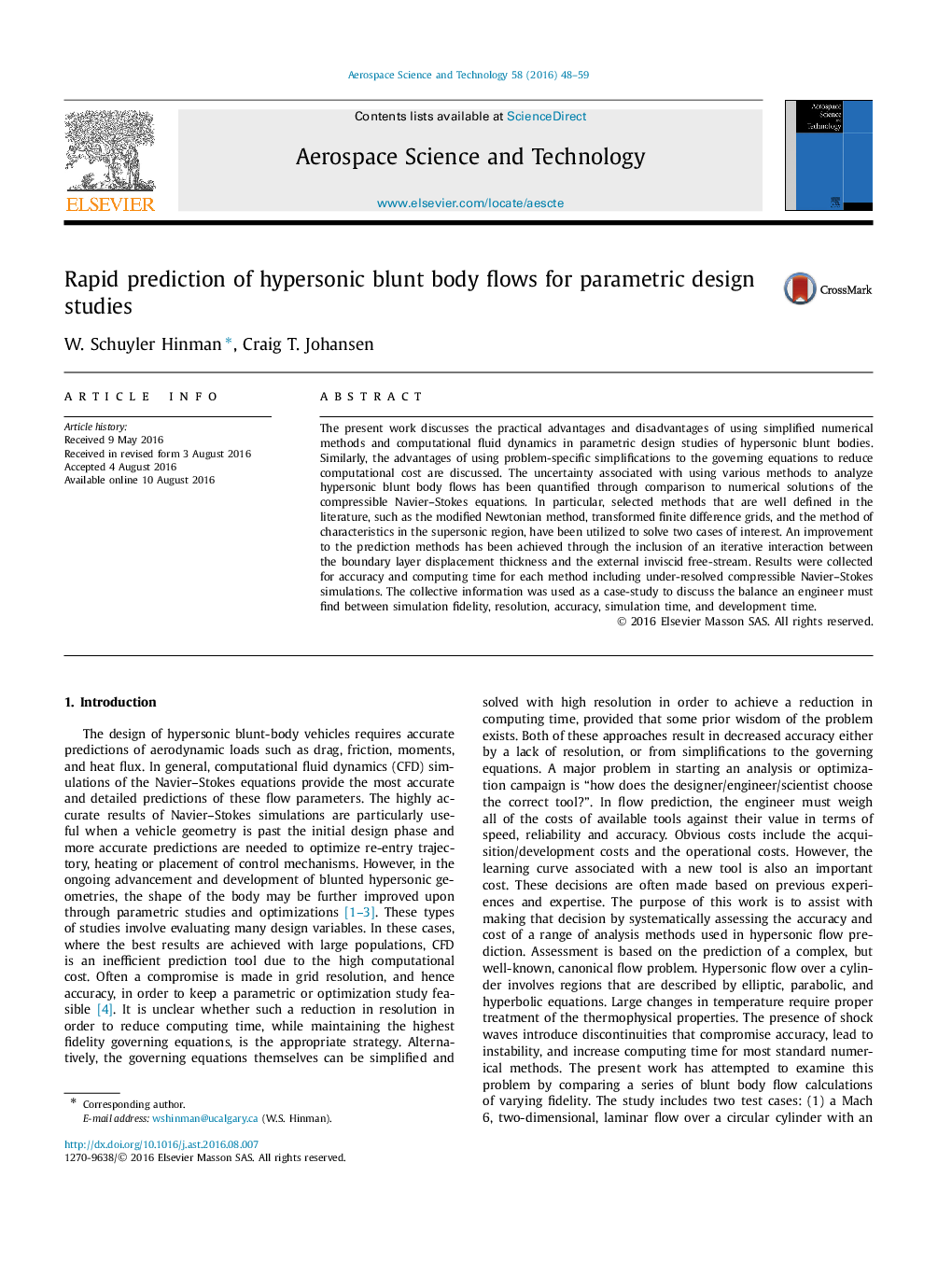| Article ID | Journal | Published Year | Pages | File Type |
|---|---|---|---|---|
| 1717516 | Aerospace Science and Technology | 2016 | 12 Pages |
Abstract
The present work discusses the practical advantages and disadvantages of using simplified numerical methods and computational fluid dynamics in parametric design studies of hypersonic blunt bodies. Similarly, the advantages of using problem-specific simplifications to the governing equations to reduce computational cost are discussed. The uncertainty associated with using various methods to analyze hypersonic blunt body flows has been quantified through comparison to numerical solutions of the compressible Navier-Stokes equations. In particular, selected methods that are well defined in the literature, such as the modified Newtonian method, transformed finite difference grids, and the method of characteristics in the supersonic region, have been utilized to solve two cases of interest. An improvement to the prediction methods has been achieved through the inclusion of an iterative interaction between the boundary layer displacement thickness and the external inviscid free-stream. Results were collected for accuracy and computing time for each method including under-resolved compressible Navier-Stokes simulations. The collective information was used as a case-study to discuss the balance an engineer must find between simulation fidelity, resolution, accuracy, simulation time, and development time.
Related Topics
Physical Sciences and Engineering
Engineering
Aerospace Engineering
Authors
W. Schuyler Hinman, Craig T. Johansen,
